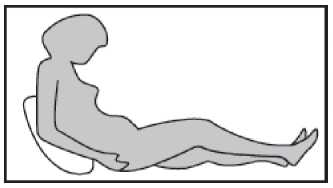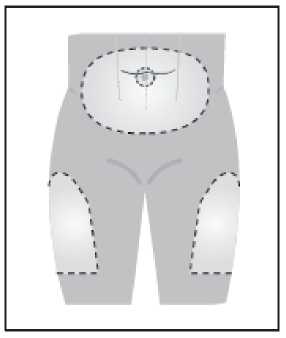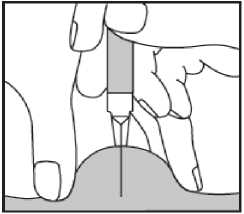Fragmin 18000 Iu/0.72 Ml Solution For Injection
Page 4 Page 1
Manufacturer and Product Licence Holder
This product is manufactured by Pfizer Manufacturing Belgium NV, Rijksweg 12, 2870 Puurs, Belgium. It is procured from within the EU by the Product Licence Holder: Swinghope Ltd, Brandon House, Marlowe Way, Croydon CR0 4XS and repackaged by Interport Limited, Brandon House, Marlowe Way, Croydon CR0 4XS.
PL No: 10380/1497
Fragmin® 18,000 IU/0.72 ml Solution for Injection
PL No: 10380/1498
Fragmin® 10,000 IU/0.4 ml Solution for Injection
Leaflet revision date: 27/10/2014
Fragmin® is a registered trademark of Pfizer Health AB, 112 87, Stockholm, Sweden.
T05029
Fragmin® 10,000 IU/0.4 ml Solution for Injection
and
Fragmin® 18,000 IU/0.72 ml Solution for Injection
(dalteparin sodium)
Patient Information Leaflet
POM
This medicine is available under either of the above strengths but will be referred to as Fragmin throughout the following:
Read all of this leaflet carefully before you start using this medicine because it contains important information for you.
• Keep this leaflet. You may need to read it again.
• If you have any further questions, ask your doctor, pharmacist or nurse.
• This medicine has been prescribed for you only. If your doctor has given you this medicine to use at home do not pass it on to others. It may harm them, even if their signs of illness are the same as yours.
• If you get any side effects talk to your doctor, pharmacist or nurse. This includes possible side effects not listed in this leaflet. See section 4.
What is in this leaflet:
1. What Fragmin is and what it is used for
2. What you need to know before you are given or use Fragmin
3. How Fragmin is given to you
4. Possible side effects
5. How to store Fragmin
6. Contents of the pack and other information
1. What Fragmin is and what it is used for
Fragmin is a solution for injection. Its active ingredient is dalteparin sodium.
Fragmin belongs to a group of medicines called low molecular weight heparins or antithrombotics, which help prevent the formation of blood clots by thinning the blood.
• Fragmin is used to treat blood clots (venous thromboembolism) and to prevent their recurrence.
• Venous thromboembolism is a condition where blood clots develop in the legs (deep vein thrombosis) or the lungs (pulmonary embolism), e.g. after surgery, prolonged bed-rest or in patients with certain types of cancer.
Ask your doctor if you are unsure why you have been given Fragmin.
2. What you need to know before you are given or use Fragmin
You should not be given or use Fragmin:
• if you are allergic (hypersensitive) to the active ingredient dalteparin sodium or a similar product or any of the other ingredients of this medicine (listed in section 6).
• if you have an active stomach ulcer or ulcer of the duodenum (small intestine).
• if you have suffered from a brain haemorrhage (bleeding in your brain).
• if you have fluid mixed with blood that appears around heart and lungs.
• if you suffer from any condition which may cause you to bleed more easily (e.g. haemophilia, liver failure). Ask your doctor if you are unsure.
• if you have a condition called septic endocarditis (an infection and inflammation of the lining of the heart and heart valves). Your doctor will have told you if you have this.
•if you have had a condition called “heparin-induced thrombocytopenia” (a decrease in the number of clotting cells (platelets) in your blood caused by heparin, which may cause you to bruise and bleed more easily).
Your doctor will have told you if you have had this.
• if you have an injury to, or have had an operation involving your spine, head, eyes or ears.
If you are receiving Fragmin to treat blood clots, you should not have a local, spinal or epidural anaesthetic.
If you are given this medicine as part of your cancer treatment your doctor will check that you weigh more than 40 kg, and that you have not had a stroke within the last 3 months.
Warnings and precautions
Talk to your doctor, pharmacist or nurse before you are given or use Fragmin:
• if you have conditions which make you more susceptible to bleeding e.g.:
■ after an operation or trauma
■ a stroke caused by a bleed
■ brain tumour
■ severe liver or kidney failure
■ abnormal or low numbers of platelets (clotting cells)
■ eye disease caused by blood pressure or diabetes
■ taking other medicines that thin the blood (e.g. aspirin, warfarin, dipyridamole)
■ uncontrolled high blood pressure.
• if you have been told by your doctor that you have a lot of potassium in your blood or have a low blood pH. Your doctor will monitor your blood regularly before and during treatment.
• if you have ever had an operation to insert an artificial heart valve.
• if you need any other injections.
You may need to have blood tests to monitor the effects of Fragmin:
■ if you have kidney failure or liver problems
■ if you are very thin or morbidly obese
■ if you are pregnant
■ if you are at increased risk of bleeding or rethrombosis (more blood clots)
■ if you are a child
■ if you have blood problems due to cancer treatment.
Children and adolescents
Dosing recommendations in children are based on clinical experience; there are limited data from clinical trials, which will help your doctor calculate the dose of Fragmin.
Other medicines and Fragmin
Tell your doctor, pharmacist or nurse if you are taking, have recently taken or are planning to take or use any other medicines. This includes medicines that you have bought for yourself.
Some medicines can affect the way Fragmin works, or Fragmin itself can reduce the effectiveness of other medicines taken at the same time.
Medicines that increase the effect of Fragmin include:
• Those used to thin your blood (e.g.
aspirin, dipyridamole, glycoprotein
receptor antagonists and warfarin).
• Medicines called non-steroidal anti-inflammatory drugs (NSAIDs) used to reduce pain and inflammation (e.g. indometacin).
• Some medicines for gout, (e.g. sulfinpyrazone and probenecid).
•Etacrynic acid (a water retention tablet (diuretic)).
• Solutions given to increase the blood volume (e.g. dextrans).
• Medicines known as cytostatics (used in cancer treatment).
• Thrombolytic medications for treating transmural heart attack (e.g. TPA-tissue plasminogen activator).
Medicines that can reduce the effect of Fragmin, include:
•Those for allergy and hay fever (e.g. antihistamines).
• Those used for heart or circulation problems (e.g. digoxin or digitoxin).
• Antibiotics known as tetracyclines which are used to treat bacterial infections.
• Vitamin C (e.g. some vitamin supplements).
Other medicines that may interfere with Fragmin include:
• Those used to treat angina (intravenous nitroglycerine)
• Antibiotics such as high dose penicillin which are used to treat bacterial infections
• Anti-malarials (e.g. quinine)
• Tobacco smoking.
Please note that if you are being treated with Fragmin for unstable coronary artery disease your doctor may adjust your dose of aspirin accordingly.
Please tell your doctor or pharmacist if you are taking or have recently taken any other low molecular weight heparins or anti-thrombotics.
Pregnancy and breast-feeding
Fragmin has not been found to cause harmful effects during pregnancy. The possibility of harm to the baby appears remote. Tell your doctor if you are pregnant and they will advise you.
Fragmin is not recommended for the prevention of blood clots on artificial valves during pregnancy.
If you are receiving Fragmin to treat blood clots, you should not have a local, spinal or epidural anaesthetic.
Ask your doctor or pharmacist for advice before being given or using this medicine whilst breast-feeding.
Driving and using machines
Fragmin does not affect the ability to drive and operate machinery.
3. How Fragmin is given to you
Your medicine will usually be administered by a doctor or nurse or you may be shown how to give the injection yourself at home (See Section on How to Inject Fragmin). The amount of Fragmin you receive will depend on your body weight.
Fragmin is given as a single, once daily, subcutaneous injection, which means it is injected beneath the skin. It is usually injected into a skin fold in your abdomen (stomach), or the outer aspects of your thigh. It should not be injected into your muscles.
Use in adults and the elderly
To treat blood clots (venous
thromboembolism)
The recommended doses depend on your body weight and will be calculated by your doctor. The usual dose used to treat venous thromboembolism is 200 IU (international units) for every kilogram you weigh once daily. The following table shows the dose you will receive depending on your body weight:
Abbreviations: IU = International Unit
This treatment course is not recommended for patients weighing less than 40 kg.
The maximum daily dose is 18,000 IU. The recommended duration of treatment is 6 months. If you are suffering from severe kidney disease or a decreased platelet count (clotting cells) caused by chemotherapy or another condition with an elevated bleeding risk, your doctor will adjust this dose accordingly.
In some cases of decreased platelet count (clotting cells), your doctor may interrupt your treatment with Fragmin for a short period.
Medical staff may take blood samples during your treatment to monitor the effects of Fragmin.
How to Inject Fragmin
This section of the leaflet explains how you should go about injecting Fragmin yourself, but you should only do so if you have been given permission by your doctor. It is a simple process and one that you can do at home.
Fragmin is given by a small injection under the skin. You should inject (or give) the dose of Fragmin at the time recommended by your doctor. Please follow the steps explained below.
• Gather the single dose Fragmin syringe and the yellow sharps bin.
• Wash and dry your hands. The injection site should be cleaned.
Please note that if a carer is doing the injecting, it is recommended that they wear gloves to perform the injection.
Step 1:
Get yourself in a comfortable sitting down position where you can see your stomach.

Step 2:
Choose an injection site either on your stomach or outer aspects of your left or right thigh (see shaded areas). Your stomach is usually best as the injection site and it is important that you change the site each time.
Your treatment will last for at least 5 days. The maximum daily dose is 18,000 IU.
Fragmin can be used together with other blood thinning medicines known as Vitamin K antagonists. Should this be desired, a minimum of five days would be required.
Medical staff may take blood samples during your treatment to monitor the effects of Fragmin.
To treat blood clots (venous thromboembolism) in certain types of cancer and prevent recurrence
The usual dose used to treat venous thromboembolism in cancer is 200 IU (international units) for every kilogram you weigh (see previous table) once daily during the first month after a thromboembolic event (blood clot), followed by 150 IU for every kilogram you weigh (during months 2-6).

Step 3:
Pick up the syringe, remove the grey rubber cover by pulling it straight off. You will notice an air bubble in the syringe. It is supposed to be there and you can just ignore it. It is important not to press the plunger just yet as some of the medicine may be lost.
|
Body Weight (kg) |
Dose (IU) |
|
< 46 |
7,500 |
|
46-56 |
10,000 |
|
57-68 |
12,500 |
|
69-82 |
15,000 |
|
> 83 |
18,000 |
Abbreviations: IU = International Unit
Dose of Fragmin during months 2-6
|
Body Weight (kg) |
Dose (IU) |
|
< 56 |
7,500 |
|
57 to 68 |
10,000 |
|
69 to 82 |
12,500 |
|
83 to 98 |
15,000 |
|
> 99 |
18,000 |
Step 4:
Hold the syringe in one hand and with the other hand, gently pinch a fold of skin with its fatty tissue (see the shaded areas above) between your thumb and index finger. This will be the injection site.
Step 5:
Hold the syringe above the folded skin keeping it at a right angle (i.e. vertically as in the diagram and not at an angle). Insert the needle into the skin until the needle is fully inserted.

Step 6:
Now press the plunger and inject the Fragmin slowly until all of the medicine has been injected. Keep pinching the fold of skin while you are injecting and then release the fold of skin and pull the needle out.
Dispose of the syringe in the yellow sharps bin provided. Keep your sharps bin out of reach of other people. When the sharps bin is almost full please speak to your doctor or nurse.
Children and adolescents
The dose will be based on both the child's age and weight. Younger children may need slightly more Fragmin per kg than adults. Your doctor will work out the right dose for you. Medical staff may take blood samples during your treatment to monitor the effects of Fragmin.
If you are given more Fragmin than you
should
If you feel that you have been given more Fragmin than you should, inform your doctor or nursing staff immediately. Your doctor may initiate measures to decrease the risk of bleeding.
If you forget to use Fragmin
Tell your doctor or pharmacist if you think that a dose has been forgotten.
A double dose should not be given to make up for a forgotten dose.
If you have any further questions on the use of this medicine, ask your doctor, pharmacist or nurse.
4. Possible side effects
Like all medicines, this medicine can cause side effects, although not everybody gets them.
Stop using Fragmin and talk to a doctor or nurse at once if you get any signs of a severe allergic reaction (such as difficulty breathing, swelling of the lips, mouth, throat or eyes)
- Common side effects (may affect up to 1 in 10 people):
■ A reversible decrease in the number of clotting cells (platelets) in your blood (Type I thrombocytopenia). This may make you bruise more easily.
■ Bleeding at any site
■ Certain substances produced by your liver may increase
■ Pain and reactions at the site of injection
■ Haematoma - collection of blood under the skin
- Uncommon side effects (may affect up to 1 in 100 people):
■ Increased levels of potassium in your blood (symptoms may include temporary muscle weakness, loss of feeling and changes in your heartbeat)
■ Red skin rash and itchiness
■ Itching
■ Allergic reactions
- Rare side effects (may affect up to 1 in
1.000 people):
■ An immune system problem resulting in a severe decrease in the number of clotting cells (platelets) in your blood (Type II thrombocytopenia)
■ Alopecia (hair loss)
■ Painful skin lesions
- Not known (frequency cannot be estimated from the available data): ■Bleeding inside or around your brain,
symptoms may include sudden severe headache
■ Bleeding behind your abdomen (stomach), symptoms may include a feeling of tenderness and swelling around your stomach
■ Bruising of the spine which may lead to back pain, tingling, numbness or weakness in your legs, bowel or bladder problems
If you have an artificial heart valve, treatment with Fragmin might not be sufficient to prevent a blood clot, and you might develop a clot in the heart valve.
The adverse reactions in children are expected to be the same as in adults, however there is only a little information about the possible side effects of long term use in children.
If you get any side effects, talk to your doctor, pharmacist or nurse. This includes any possible side effects not listed in this leaflet.
Reporting of side effects
If you get any side effects, talk to your doctor, pharmacist or nurse. This includes any possible side effects not listed in this leaflet. You can also report side effects directly via the Yellow Card Scheme at: www.mhra.gov.uk/yellowcard By reporting side effects you can help provide more information on the safety of this medicine.
5. How to store Fragmin
• Keep out of the sight and reach of children.
• Do not store above 25°C.
• Fragmin should not be used after the expiry date mentioned on the pack. The expiry date refers to the last day of that month.
• Your doctor or nurse will store Fragmin in a safe place under the above conditions.
• Medicines should not be disposed of via wastewater or household waste. Ask your pharmacist how to dispose of medicines no longer required. These measures will help to protect the environment.
6. Contents of the pack and other information
What Fragmin contains
• The active ingredient in Fragmin is dalteparin sodium.
• Each syringe provides a single dose of dalteparin sodium
10.000 IU/0.4 ml Solution for injection.
18.000 IU/0.72 ml Solution for injection.
• The other ingredients are Water for Injections and either Sodium Hydroxide or Hydrochloric Acid for pH adjustment.
What Fragmin looks like and contents of the pack
• Fragmin Solution for Injection is a clear, colourless or straw coloured solution and is supplied in pre-filled single dose syringes sealed with a grey rubber stopper.
• Each pack contains 5 pre-filled syringes.
T05029